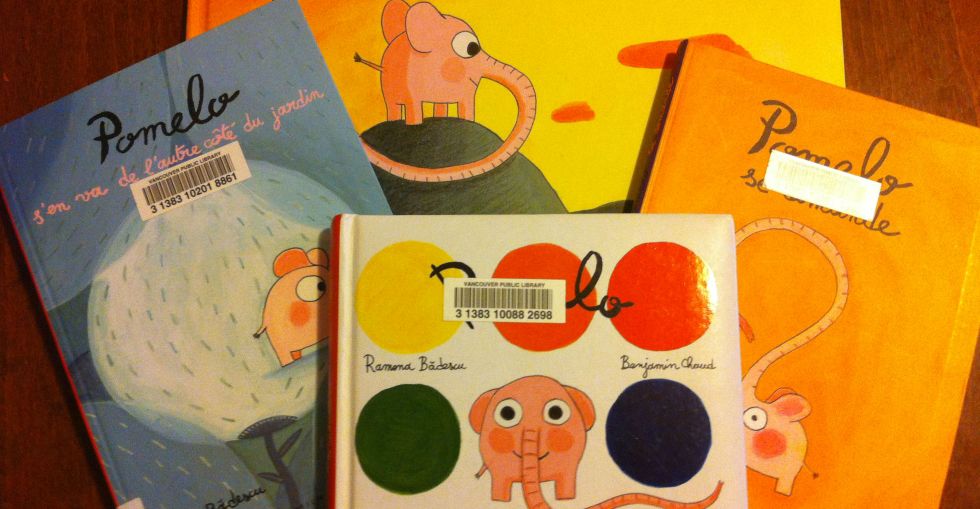Learning French with Pomelo the garden elephant

What is it?
A series of eleven French picture books written by Ramona Bădescu and illustrated by Benjamin Chaud that explore the world from the perspective of a small pink ‘garden elephant’.

“le blanc rassurant du Pissenlit” (the comforting white of the Dandelion) from the book ‘Pomelo et les couleurs’
It is obvious that Pomelo is not your average-sized elephant. He is commonly seen relaxing under a fluffy dandelion or beside his friends Gigi (a snail), Gantoc (an elderly turtle) and Rita (a frog and his love interest although she routinely turns him down). The books also include Pomelo’s interactions with the ants, spiders, flies, dandelions, radishes, strawberries, turnips and other plants and small creatures found in his garden world.
Who is it for?
Many of the Pomelo books have been translated into other languages, however their original versions are great for people of all ages who are learning French. Bădescu’s Pomelo et les contraires (Pomelo’s Opposites) and Pomelo et les couleurs (Pomelo’s Colours) are my preschooler’s favourites so far since they are easiest to understand. Another easy to read book in is Bădescu’s newest called Pomelo et les formes (Pomelo’s Shapes). These picture books are great for beginner French learners who are looking to increase their comprehension and vocabulary. The longer, more complex stories such as Pomelo grandit (Pomelo Begins to Grow) and Pomelo se demande (Pomelo Wonders) are best for older children (or more advanced French learners) who may be better able to follow the plot.
Why we love it
Pomelo’s curiosity and sense of humour can be appreciated by children and adults alike. The illustrations by Benjamin Chaud are basic yet colourful and detailed all the same, and the expressions on Pomelo’s face are the icing on the cake.
Picture books are a fantastic resource for both children who are learning in their native language and also for adult language learners since the illustrations greatly improve comprehension.





